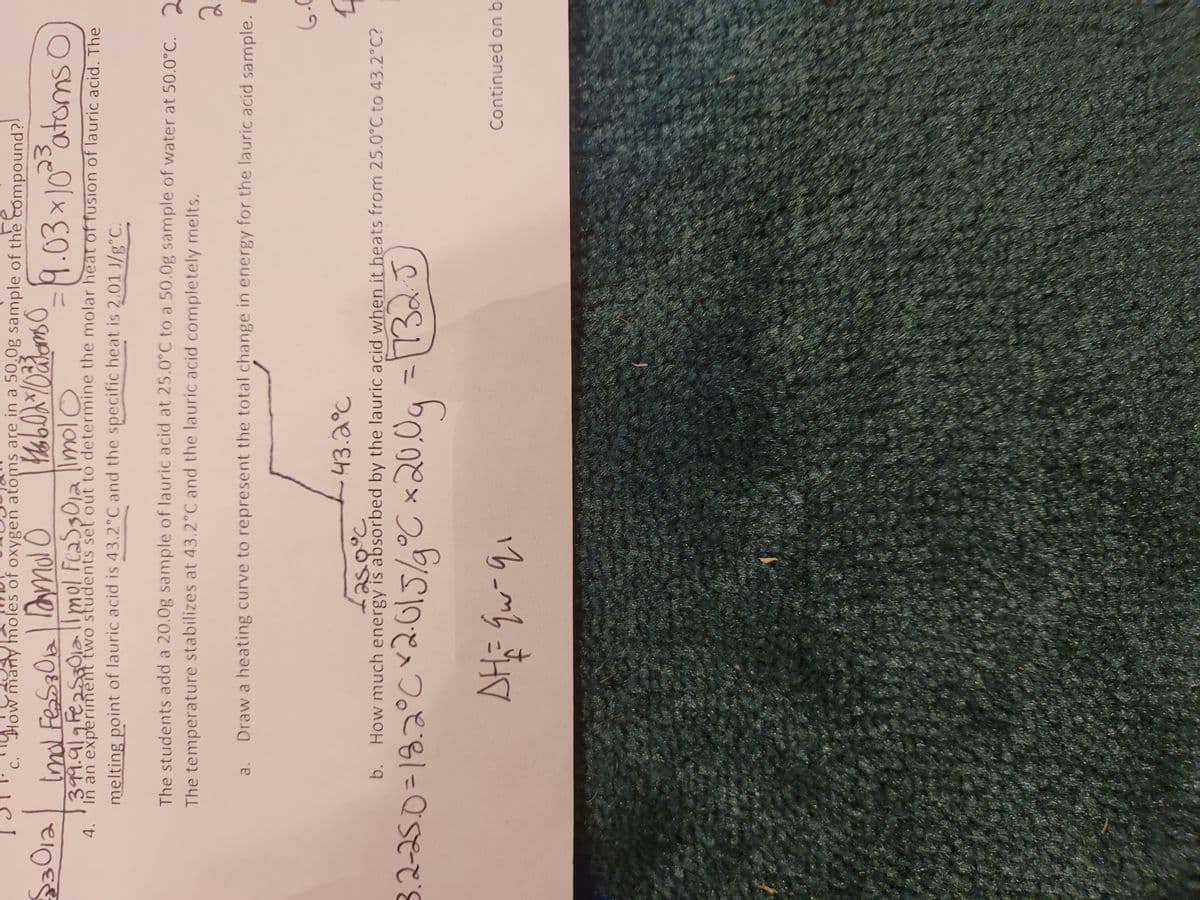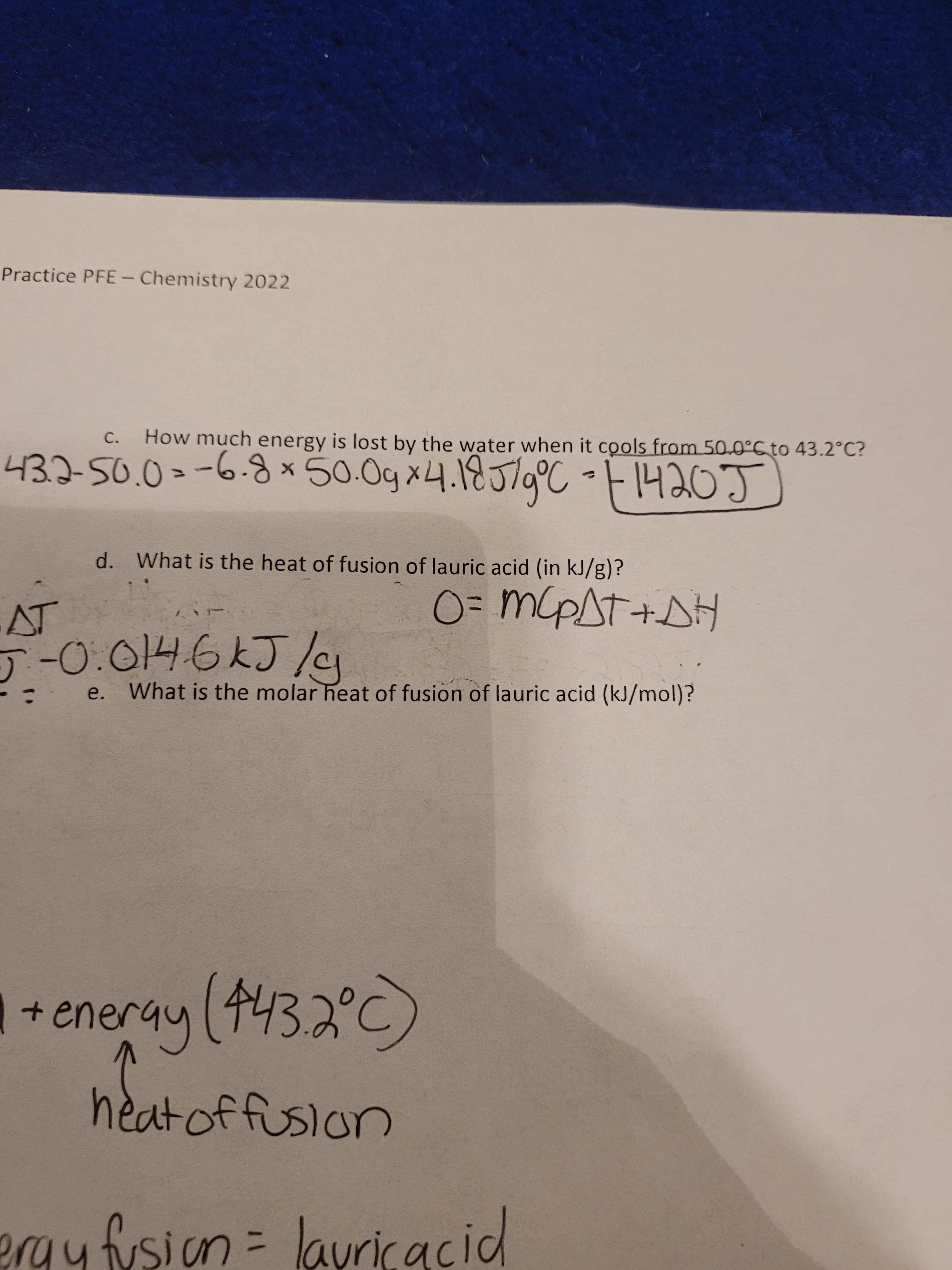-0.0146KJ /g 432-50.0--6.8.× 50.0g x4.18579°C-F1420J C. How much energy is lost by the water when it cools from 50.0°C to 43.2°C? d. What is the heat of fusion of lauric acid (in kJ/g)? AT : e. What is the molar heat of fusion of lauric acid (kJ/mol)?
States of Matter
The substance that constitutes everything in the universe is known as matter. Matter comprises atoms which in turn are composed of electrons, protons, and neutrons. Different atoms combine together to give rise to molecules that act as a foundation for all kinds of substances. There are five states of matter based on their energies of attraction, namely solid, liquid, gases, plasma, and BEC (Bose-Einstein condensates).
Chemical Reactions and Equations
When a chemical species is transformed into another chemical species it is said to have undergone a chemical reaction. It consists of breaking existing bonds and forming new bonds by changing the position of electrons. These reactions are best explained using a chemical equation.
Dropped the question below in images. Having a hard time with this one.


Step by step
Solved in 3 steps

In question c, since the answer was confirmed to be -1420 J, why did you use a positive 1420 for the calculation in step 2?








